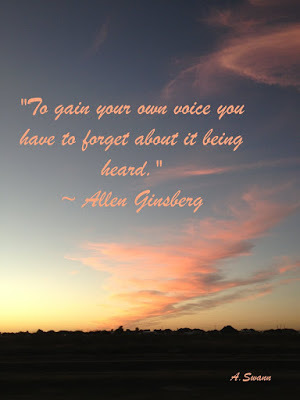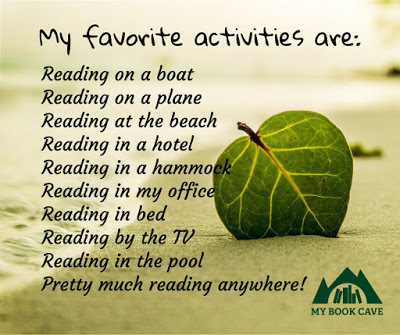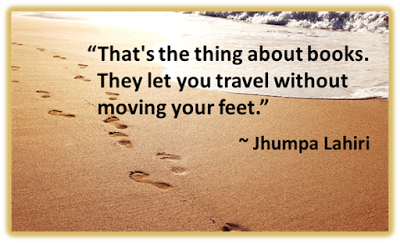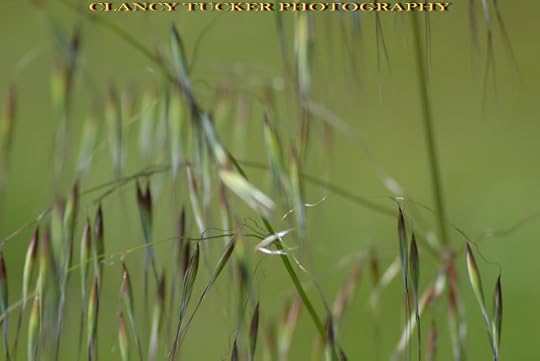Clancy Tucker's Blog, page 164
January 6, 2018
7 January 2018 - MOVING PICTURES

MOVING PICTURES
G'day folks,
Welcome to your first dose of moving pictures for 2018.





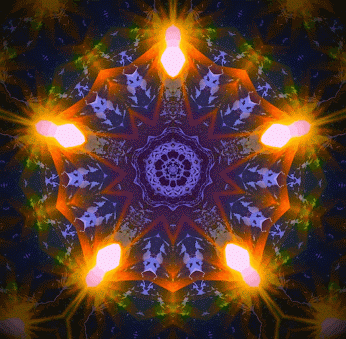










Clancy's comment: There are some brilliant ones here, but I loved the mice!
I'm ...


Published on January 06, 2018 12:25
January 5, 2018
6 January 2018 - GREAT QUOTES WORTH READING
Published on January 05, 2018 12:54
January 4, 2018
5 January 2018 - FACTS ABOUT THE AFGHAN HOUND
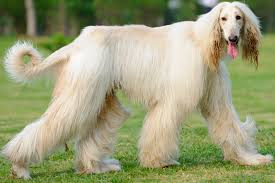
FACTS ABOUT THE AFGHAN HOUND
G'day folks,
The Afghan Hound is a hound that is distinguished by its thick, fine, silky coat and its tail with a ring curl at the end. The breed was selectively bred for its unique features in the cold mountains of Afghanistan.
Afghan Hound History and Domestication
The Afghan Hound is thought to be one of the oldest of all domestic Dogbreeds, with the first records of the Afghan Hound dating back to 4,000 BC. The fast and agile nature of this Dogmeant that they made excellent hunters of small game in their native Afghanistan, most commonly hunting Deer, Goats, Gazelle and Wild Boar along with seeing off larger predatorssuch as Wolves and Snow Leopards. Their gentle nature also made this elegant sight-hound a doting shepherd, fearlessly protecting livestock from hungry predators. This beautiful but gently natured watchdog was brought to Britain in the early 1920s and its entry to the USA followed in 1926. The elegance of the Afghan Hound meant that they quickly became highly desirable Dogs, both as pets and for show.
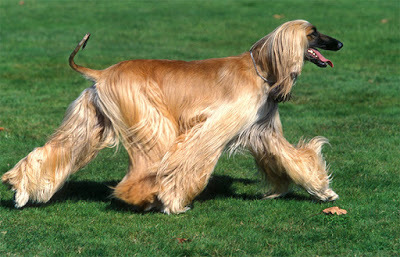
Afghan Hound Physical Characteristics
The most characteristic feature of this breed is the long, silky fur that covers the Afghan Hound's body, most notably on the top of its head. Afghan Hounds are most commonly black or golden in colouralthough a number of colourvariations now exist within the breed including brown, grey and white. The elongated head and muzzle of the Afghan Hound make them easily identifiable, along with their high hip-bones which gave the ancestors of the modern day Afghan Hound their reputation for speed and agility. The face of the Afghan Hound is usually a black-coloured mask, with a black nose and dark almond shaped eyes. The colourof the facial mask is known to vary although white is said to be discouraged as it is seen as a sign of poor breeding. They are fairly large Dogsstanding on average at 68cm in height.
Afghan Hound Behaviourand Temperament
The temperamentof the typical Afghan Hound tends to be aloof and dignified, but happy and intelligent and generally relatively playful. However, the Afghan Hound has a reputation among Dogtrainers for having a relatively slow obedience intelligence possibly due to their slightly stubborn nature. The Afghan Hound has a leaning towards independence and owners should not be surprised if their Dogsometimes chooses to ignore commands. The modern day Afghan Hound is said to have many Cat-like tendencies, loving to laze around the house and is generally much slower than its Middle Eastern ancestors. The Afghan Hound is seldom used for hunting in Europeand America today where they are one of the most popular domestic Dogbreeds.
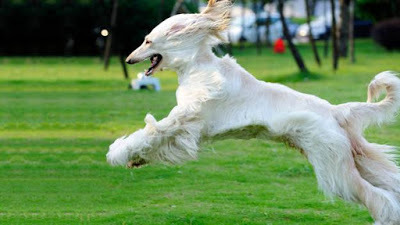
Afghan Hound Breeding
The Afghan Hound was first bred in the ancient desertsof Egyptand Afghanistan, where they were primarily used as hunters. The Afghan Hound was a favoured choice of Dogas they were able to outrun the majority of other animals, whilst being courageous hunters and were capable of thinking independently, often able to keep larger preyfrom escaping until the hunter arrived. The first domestic breeding of the modern day Afghan Hound was by an English officer station near Kabul, who later brought the Afghan Hound to the UK in 1925. A year later, the Afghan Hound was taken to America where its beauty and elegance made it one of the most prestigious breeds of domestic Dogin the States.The average litter sizeof the Afghan Hound is around 7 puppies, which are blind when first born.
Afghan Hound Interesting Facts and Features
When the Afghan Hound breed was first brought to America, its naturally independent nature led to it gaining a reputation for being untrustworthy. Today however, many of these traits are not quite as prominent in the breed as they once were. The high hip-bones of this Dogare thought to be one of the main reasons why the Afghan Hound once had a reputation for speed, making them faster at running than most other domestic Dogbreeds today. The long topknot on the top of its head, along with the small ring near the end of its tail, are two of the most distinctive features of the mature Afghan Hound. They originate from the mountainsof Afghanistanand their unique appearance provides these Dogswith vital advantages during the cold winters and hot summers. Although beautiful, this long fur takes daily care and maintenance to ensure that the coat remains healthy.

Clancy's comment: Very sleek and feminine.
I'm ...
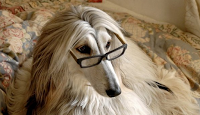

Published on January 04, 2018 12:18
January 3, 2018
4 January 2018 - WHY IS SWITZERLAND A NEUTRAL COUNTRY?

WHY IS SWITZERLAND A NEUTRAL COUNTRY?
G'day folks,
Have you ever wondered about this? Switzerland is a mountainous Central European country, home to numerous lakes, villages and the high peaks of the Alps. Its cities contain medieval quarters, with landmarks like capital Bern’s Zytglogge clock tower and Lucerne’s wooden chapel bridge. The country is also known for its ski resorts and hiking trails. Banking and finance are key industries, and Swiss watches and chocolate are world renowned. However ...
For centuries, the tiny Alpine nation of Switzerland has adhered to a policy of armed neutrality in global affairs. Switzerland isn’t the world’s only neutral country—the likes of Ireland, Austria and Costa Rica all take similar non-interventionist stances—yet it remains the oldest and most respected. How did it earn its unique place in world politics?
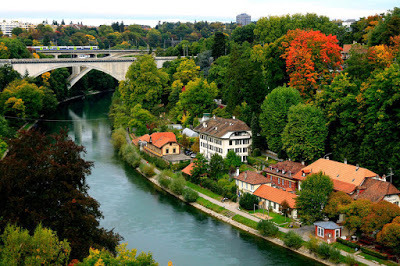
The earliest moves toward Swiss neutrality date to 1515, when the Swiss Confederacy suffered a devastating loss to the French at the Battle of Marignano. Following the defeat, the Confederacy abandoned its expansionist policies and looked to avoid future conflict in the interest of self-preservation. It was the Napoleonic Wars, however, that truly sealed Switzerland’s place as a neutral nation. Switzerland was invaded by France in 1798 and later made a satellite of Napoleon Bonaparte’s empire, forcing it to compromise its neutrality.
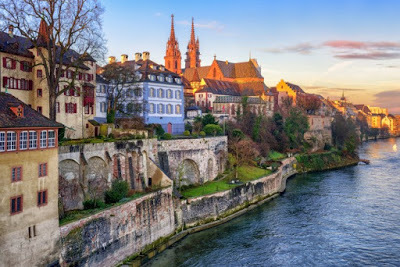
But after Napoleon’s defeat at Waterloo, the major European powers concluded that a neutral Switzerland would serve as a valuable buffer zone between France and Austria and contribute to stability in the region. During 1815’s Congress of Vienna, they signed a declaration affirming Switzerland’s “perpetual neutrality” within the international community.
Switzerland maintained its impartial stance through World War I, when it mobilized its army and accepted refugees but also refused to take sides militarily. In 1920, meanwhile, the newly formed League of Nations officially recognized Swiss neutrality and established its headquarters in Geneva. A more significant challenge to Swiss neutrality came during World War II, when the country found itself encircled by the Axis powers. While Switzerland maintained its independence by promising retaliation in the event of an invasion, it continued to trade with Nazi Germany, a decision that later proved controversial after the war ended.
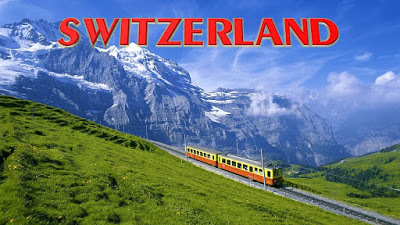
Since World War II, Switzerland has taken a more active role in international affairs by aiding with humanitarian initiatives, but it remains fiercely neutral with regard to military affairs. It has never joined the North Atlantic Treaty Organization (NATO) or the European Union, and only joined the United Nations in 2002. Despite its longstanding neutrality, the country still maintains an army for defense purposes and requires part-time military service from all males between the ages of 18 and 34.

Clancy's comment: Great place, but often a bit cold.
I'm ...

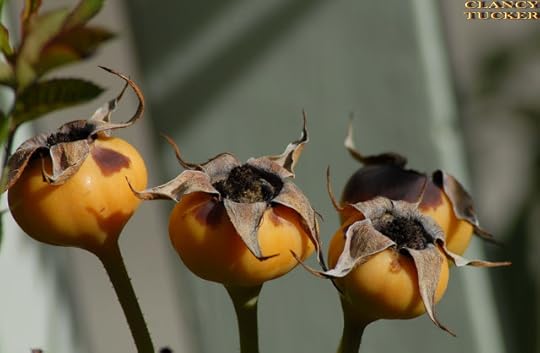
Published on January 03, 2018 11:49
January 2, 2018
3 January 2018 - FAMOUS LAST WORDS

FAMOUS LAST WORDS
G'day folks,
Welcome to some last words by noted folks around the world.
66. Louise – Queen of Prussia
“I am a Queen, but I have not the power to move my arms.”
67. Joseph Addison – Writer
“See in what peace a Christian can die.”
68. Alexander Pope – Writer
“Here am I, dying of a hundred good symptoms.”
69. James M. Barrie – Author
“I can’t sleep.”
70. Johann Wolfgang von Goethe – Writer
“Come my little one, and give me your hand.”
71. Pietro Perugino – Italian painter
“I am curious to see what happens in the next world to one who dies unshriven.”
72. Georges Clemenceau – French Premier
“This time it will be a long one.”
73. Charles II – King of England and Scotland
“Don’t let poor Nelly (his mistress, Nell Gwynne) starve.”
74. Rudolph Valentino – Actor
“Don’t worry chief, it will be alright.”
76. James Joyce – Writer
“Does nobody understand?”
77. Jane Austen – Writer
“Nothing, but death.”
78. Louisa May Alcott – Writer
“Is it not meningitis?”
79. James Thurber – Humorist
“God bless… God damn.”
80. Boris Pasternak – Writer
“Good-bye . . . why am I hemorrhaging?”

Clancy's comment: So, what would your last words be?
I'm ...


Published on January 02, 2018 12:06
January 1, 2018
2 January 2018 - ALCOHOL-INFUSED SAUSAGES IN IRELAND
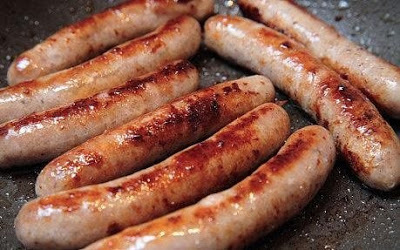
ALCOHOL-INFUSED SAUSAGES IN IRELAND
G'day folks,
They say you shouldn’t drink and drive, but one meat shop in Irvinestown, Northern Ireland, wants to make “don’t eat and drive” a thing too. It has recently launched a line of sausages infused with popular alcoholic drinks, including vodka and Red bull, or dark rum and orange soda.

Maguire Meats owner Keelan Maguire says that he came up with the idea for alcohol-infused sausages while talking with his team about new products for the summer barbecue season. Alcohol just seemed like the craziest idea, so they went with that. They launched their vodka and Red Bull bangers last week, and since they were an instant hit, they just added a Captain Morgan rum and Club Orange soda sausage to their line. They’re both selling like crazy, according to Maguire.
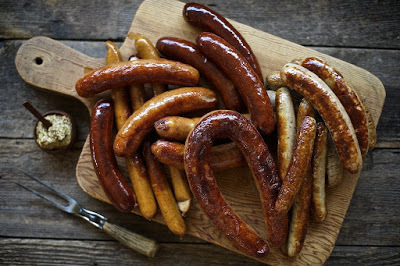
“We were thinking about the sausage range for the summer and this was the craziest one we could think of.” the owner told Belfast Live. “So we gave it a go and it worked out very well and they are very popular. We also added a spicy beef one which is doing well too. It is something different for the BBQ this summer. We have a few other ideas up our sleeve so keep an eye out.”
“It [the feedback] has been very good, actually,” Maguire said in an interview with Meat Trades Journal. “The vodka and Red Bull took off all together. They’re flying out. The Captain Morgan ones have only started and there’s been a lot of demand for them at the minute. It’s looking good so far.”
Maguire Meats doesn’t plan to stop at sausages. It’s also developing an Orchard Thieves Irish cider and pork burger, and they may end up mixing alcohol with some of their other meat products.
 Interestingly enough, alcohol-infused sausages are starting to look like somewhat of a trend in Northern Ireland, right now. About a month ago, McCartney’s Of Moira, a 140-year-old butcher shop in Craigavon, started selling gin and tonic pork sausages, and pear cider sausages. They’re also famous for Guinness beer sausages, which they apparently recommend you not eat if you plan on driving afterwards.
Interestingly enough, alcohol-infused sausages are starting to look like somewhat of a trend in Northern Ireland, right now. About a month ago, McCartney’s Of Moira, a 140-year-old butcher shop in Craigavon, started selling gin and tonic pork sausages, and pear cider sausages. They’re also famous for Guinness beer sausages, which they apparently recommend you not eat if you plan on driving afterwards.
Clancy's comment: Mm ... I'd like to try them.
I'm ...


Published on January 01, 2018 12:28
December 31, 2017
1 January 2018 - HAPPY NEW YEAR

HAPPY NEW YEAR
G'day folks,
Happy New Year. I hope this year has more promise than 2017. No matter where you live in the world, there has been some natural and human disasters during 2017, and who knows what will happen this year?
Well, 2018 has officially begun, at least in some parts of the world. The first to welcome the new year are people in the Pacific islands of Samoa, Tonga and Kiritimati, an atoll in the ocean also known as Christmas Island, part of the republic of Kiribati.
Samoa, a country comprising the westernmost group of Polynesia’s Samoan Islands where less than 200,000 people live, was once one of the last places in the world to celebrate the New Year. Then, in 2011, it decided to change its international dateline to align more closely with New Zealand and Australia in a bid to improve trade ties.
American Samoa however decided to stick with the international dateline, which is now crossing between the two island groups. This means that those who really love New Year’s celebrations could be in Samoa on Jan. 1, take a boat to cross the 100 miles to American Samoa, and party on New Year’s Eve all over again.
 Auckland
AucklandNew Zealand entered 2018 an hour after Samoa. Fireworks lit up the sky over the city of Auckland and in Wellington, the first major capital to welcome the new year.
The Wellington City Council organized the celebrations at the Whareipo Lagoon in the city center, an area that was only given its official name in 2015. The word ‘Whairepo’ is the Māori name for the eagle ray that feed and shelter in the lagoon.
Eastern Australia’s cities of Melbourne, Sydney, Canberra and also Honiara, entered 2018 two hours after New Zealand and about an hour after Anadyr, Russia’s easternmost town.
Australia’s largest city, Sydney has a world-famous fireworks display brightening the sky over the iconic Opera House in the city’s harbor, attracting spectators from the world over.
 Sydney
Sydney It took more than two hours for all of Australia’s three time zones to past midnight. In the meantime, Japan’s Buddhist temples will have celebrated the new year striking their gong 108 times at midnight, in an effort to expel 108 types of human weakness and prepare for new beginnings. Shinto households instead will have gone through a thorough cleaning to welcome the kami (god) believed to be visiting at New Year's.
South Korea entered 2018 along with Japan with a fireworks display over Seoul's Lotte World Tower, the fifth tallest skyscraper in the world. Its northern neighbor instead followed 30 minutes later with a pyrotechnic show accompanied by live music performances in Pyongyang.
North Korea created its own time zone in August 2015 to mark the 70th anniversary of the liberation from Japanese rule, under which the Korean peninsula was forced to change its time zone to match Japan.
Half an hour later, 2018 began in China, the Philippines, Malaysia and Singapore, where fireworks were lighting up the iconic Marina Bay.
 Hong Kong
Hong KongIn Hong Kong, the fireworks display lit up the sky above the iconic Victoria Harbour to the sound of Auld Lang Syne remix.
The world's tallest twin skyscrapers, the Petronas Twin Towers in Malaysia's Kuala Lumpur, offered the backdrop to the fireworks welcoming 2018 in the country.
 Kula Lumpur
Kula LumpurClancy's comment: All very flash and exciting, but what is the cost of these fireworks that are all over in a few minutes - millions of dollars that could have been spent on more needy issues. Just sayin' ...
I'm ...


Published on December 31, 2017 13:20
December 30, 2017
31 December 2017 - THE AMAZING CARRION CROW
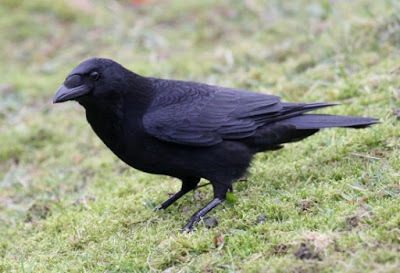
THE AMAZING CARRION CROW
G'day folks,
I guess we have all seen these birds at some stage in our lives. There are plenty of them in Australia. So, here are some interesting facts about these creatures. By the way, a group of crows is called a ‘murder’. They are extremely intelligent birds. Some have been observed using basic tools!
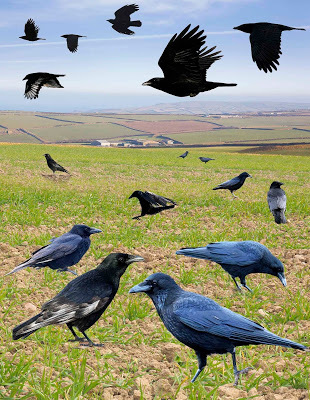
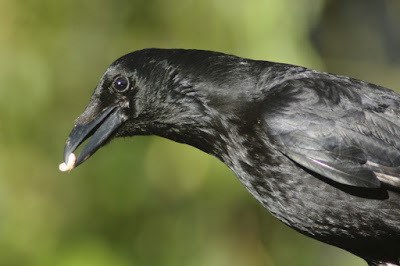
Quick FactsType: BirdDiet: OmnivoreLife span: 7 years but have been known to live as long as 14 years in the wildSize: Length around 17.5 inches. Wing SpanWeight: 450gHabitat: Almost any environment, urban or ruralRange: Most of the UK, Western Europe and East AsiaScientific name: Corvus Corone Amazing Facts About the Carrion CrowCrows are extremely intelligent birds. They have the largest brain of all birds except for parrots. The body to brain ratio of a crow is the equivalent of a chimpanzee! This means that it is not far off that of humans.Crows have been observed using basic tools. For example, some crows in Japan use cars on the road to crack open nuts. In some instances, crows have even been observed using sticks to access food out of reach.Crows have an excellent memory. They have been known to hide food away to save it for later. Sometimes moving the food 2-3 times, always remembering where it was hidden.Crows can be identified by their distinctive ‘caw-caw’ sound. Considered song birds due to their vast range of melodies, crows have been known to vocalise their feelings in response to hunger or being threatened, for example.Until recently, Carrion crows and Hooded crows were thought to be the same species. However, they are different, occupying different parts of Europe and Asia. In some areas where territories overlap, interbreeding occurs. The Carrion crow can be distinguished from the Hooded crow by it’s all black body compared to the ash-grey body of the Hooded crow.Crows can be distinguished from rooks as they have feathers around their thighs and around the base of their beak. Adult crows can be set apart from juveniles by their black eyes. Juveniles have pale blue eyes and duller, more brown plumage compared to an adult crow’s light violet gloss on their body and greenish-blue gloss on their wings. Crows are often described as fearless. They will chase eagles which can weigh nine times more than the crow! Despite their fearlessness, crows are often still wary of people, who are their biggest predator. The crow can be found across a huge area spanning Europe and Asia and its population is estimated to be between 43 and 204 million and growing. Crows have been known to perform ‘anting’ where they rub ants all over their feathers or lie near an ant hill allowing the ants to crawl through their feathers. It is yet unknown why exactly birds do this. Some Suggest the ant act as an insecticide and anting helps control parasites such as feather mites. Others argue it is carried out as a method of catching prey – enticing the ants to rid themselves of their poison sacks, allowing the birds to eat them harmlessly. When crows mate they often stay together for life, separating only at death. However, some instances have found only the females mate for life while the males will cheat on occasion! Crows build nests all over the place: in pylons, trees and cliff edges, almost anywhere can be suitable. Nests are built from twigs with a lining of hair and bark. Both the male and female build the nest together and the female then incubates the eggs. Once the eggs are hatched both birds help feed the chicks. A nestling crow can eat as many as 100 grasshoppers in 3 hours! Crows are mostly resident. This means they do not migrate and will stay near their breeding grounds. Crows living in urban areas have a much smaller territory compared to those in rural areas. The nesting territory of city crows is only 10% that of rural crows. Scavengers by nature, a crow’s diet can involve over 1000 different food items. From worms, insects and carrion to scraps of food, fruit and seeds. Crows are very good egg thieves. They will watch other birds build their nests, observing and inspecting what the birds do. This makes it much easier for the crow to rob the nest once the eggs have been laid. As highly opportunistic birds, crows will watch other birds bringing their young food, which they may swoop in and steal!
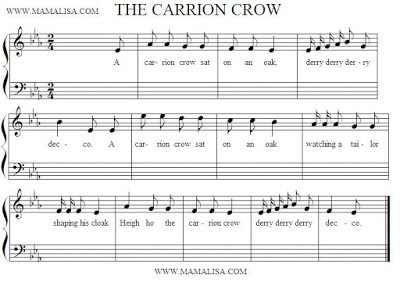

Clancy's comment: These birds are ancient. They are probably the first bird I recall seeing on black and white television as a kid.
I'm ...
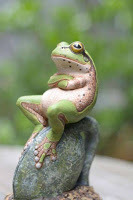

Published on December 30, 2017 18:12
December 29, 2017
30 December 2017 - PASTOR Sir Douglas Nicholls
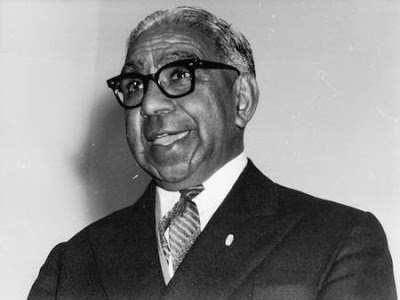
PASTOR Sir Douglas Nicholls
G'day folks,
Welcome to some background on a very successful and talented Aboriginal. Sir Douglas Ralph Nicholls, KCVO OBE was a prominent Aboriginal Australian from the Yorta Yorta people. He was a professional athlete, Churches of Christ pastor and church planter, ceremonial officer and a pioneering campaigner for reconciliation.
Pastor Doug Nicholls was born in Cumeroogunga NSW in 1906. His elder sister Hilda was taken from the family when he was only eight and she was sixteen. Doug Nicholls never forgot the trauma created by the incident.
Nicholls came to Melbourne in 1927 seeking a football career after success with country club Tongala. Carlton rejected him, amid racial resentment from teammates, so he turned to Northcote Football Club; the family boarding him were supporters of the ‘Brickfielders’. Nicholls debuted for Northcote in 1927 and was paid £2 for the game. To supplement the income provided by football, Nicholls, like many teammates, was given work with the Northcote Council’s outdoor staff during the season. In the off-season, Nicholls travelled the country with Jimmy Sharman’s Boxing Troupe. Members of the public could challenge a member of the troupe to a bout. Nicholls had discovered his boxing ability after a fight on a sheep ranch he was working on prior to coming to Melbourne.
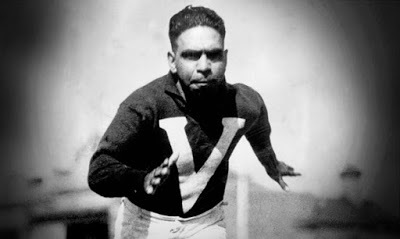
Nicholls soon established himself as a star player, and as the only Aborigine playing senior football in the state; he was Northcote’s number one drawcard. He had outstanding speed, having also competed in professional sprint races, and was lauded as one of the game’s outstanding wingmen. He played in the club’s first Premiership in 1929 before the lure of League football could no longer be resisted. Northcote had withstood the advances of Carlton and Collingwood for Nicholls’ services, but following the 1931 season, he transferred to Fitzroy. In five seasons he played 54 games, finishing third in the club’s best and fairest count in 1934 and representing Victoria in 1935. With failing eyesight, Nicholls left Fitzroy and returned to Northcote in 1938, before retiring in 1939.
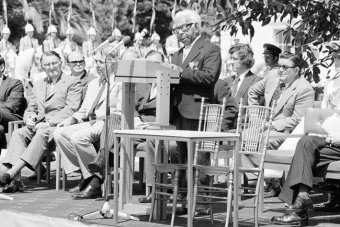
A visit in the early 1930s to the Northcote Church of Christ would be a life-changing event for Doug Nicholls. Struggling to deal with the death of his mother as well as suffering from a knee injury, the church was an inspiration to Nicholls. He soon converted to the church, becoming a pastor in 1939. Football had opened doors for Nicholls that were closed to so many of his people, and he used his position to advance their cause. In 1939 he was a key speaker at an Aboriginal Night where he called for social justice and equality for Aborigines. He was also involved in the newly created Australian Aborigines’ League.
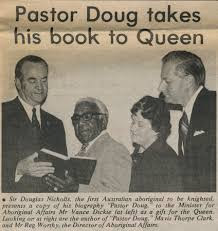
His association with football continued and in 1944, with the VFA in recess, Nicholls arranged for an Aboriginal Football Team to play an exhibition match against Northcote. Several thousand football starved supporters came to the match, with proceeds going to the Aboriginal welfare funds. The success of the match saw the exhibition repeated in later years. Nicholls also coached Northcote in 1947, although the club had a poor season, finishing last. In the same year he was appointed curator of Northcote Park. He stayed in that position until 1956, living in the house provided at the park and dividing his time between the curator’s responsibilities and working for Aboriginal causes.
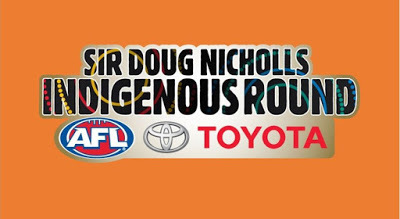
To combat the problem of Aboriginal homelessness, Nicholls led an effort to purchase the All Saints Church vicarage in Cunningham St, Northcote. Nicholls formed a committee, which became the Aborigines’ Advancement League to help raise funds for the purchase. The large home was converted into a hostel for Aboriginal girls, opening in 1958. In 1957 Nicholls was appointed the field officer for the Aborigines’ Advancement League. In 1962 a similar hostel for boys was opened across the road and then in 1967 the ‘Douglas Nicholls Centre’ was opened adjoining the original hostel. The centre contained recreational and meeting facilities.
Throughout his career as a crusader for Aboriginal rights, the Doug Nicholls approach was for acceptance and reconciliation. He asked white people: “…is there a reason why we should not march beside you? Do you extend to us the hand of friendship?” He was prepared to be involved in events like the Batman Treaty re-enactments, which some considered demeaning to Aborigines. Nicholls felt that they brought attention to the nation’s history and of the Aboriginals place as the original owners of the land. He co-founded the Federal Council for the Advancement of Aborigines and Torres Strait Islanders, helped develop more housing alternatives for Aboriginal children and was part of the creation of a national day of remembrance.
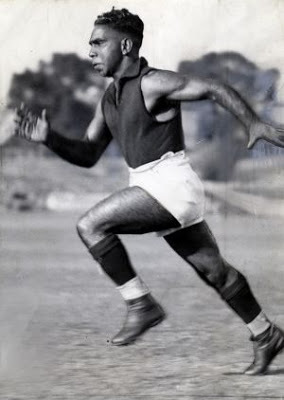
Nicholls approach worked. He was awarded an M.B.E. in 1957, made a Justice of the Peace in 1962, named Father of the Year and given an O.B.E. In 1972 he was the first Aboriginal to be knighted. By the 1970s some Aborigines, encouraged by the Black Power Movement, were promoting a more aggressive stance in their campaign for equality. While such an approach would not have been possible without the efforts of Nicholls, it signalled an end to his style of campaign.
In keeping with his intention to always demonstrate that Aborigines were capable of holding any post, Sir Douglas Nicholls accepted the appointment of Governor of South Australia in 1976. He was the first Aboriginal to hold such a position. Unfortunately he was forced to retire after just one year in office after suffering a severe stroke. Nicholls and his wife returned to live in Northcote following his period as South Australian Governor. He died in 1988 and was given a state funeral before being buried at Cumeroogunga.
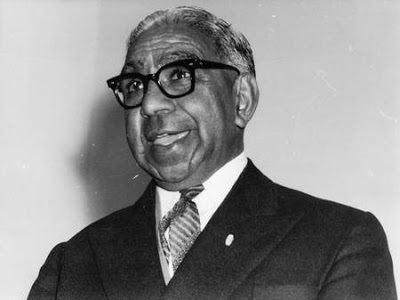
When the headquarters of the Aboriginal Advancement League began to fall into disrepair in the late 1970s, the League was able to secure land from the Victoria Government on the site of the old Glen Iris Brick Company. This was the first freehold land granted to Aboriginals in Victoria, fittingly it was in Northcote. Through the state and federal governments, along with the Aboriginal Development Commission and the League itself, $750,000 was raised for the construction of a new centre. Alongside, the centre, a playing oval was built: The Sir Douglas Nicholls Reserve. Northcote has remained a centre for Aboriginal people in Melbourne with over 1,000 calling the city of Darebin home, making it one of the largest Indigenous communities in Melbourne. Doug Nicholls played an instrumental role in making Northcote, and Darebin, a home for Aboriginal Australians.

Clancy's comment: Sir Doug was a highly regarded Australian.
I'm ...


Published on December 29, 2017 12:50
December 28, 2017
29 December 2017 - SUPER LOYAL DOG IN ARGENTINA
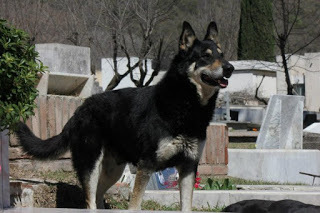
SUPER LOYAL DOG IN ARGENTINA
G'day folks,
A loyal German shepherd has refused to leave the side of his owner, even though he had been dead for nearly six years. Well, believe it or not, the old dog still spends his days waiting by his deceased owner’s grave, 10 years after he passed.
Capitan’s undying loyalty for his master first made headlines in 2012, when local papers in the Argentinian town of Villa Carlos Paz reported that the dog spent every day waiting by the grave of his owner, Miguel Guzmán, who had died in 2006. The dog disappeared from the family home a few months later, and Guzmán’s widow, Veronica, was shocked to find him by her late husband’s grave, when she went to visit him at the cemetery. She and her son, Damian, tried taking him home several times, but he always ran back to be by Miguel’s side. Eventually, they understood that nothing they did could ever fill the void in Capitan’s heart, so they let him be with his beloved master.

Over the years, Capitan won the affection and respect of cemetery caretakers, who made sure that he was well-fed and vaccinated every year, but time has taken a toll on the aging canine. He is 15-year-old now, has lost his sight almost completely and can barely walk, but he still stands by his owner’s grave, as if waiting for the day when they will finally be reunited. He is still being taken care of, and receives medical attention when he needs it, but there is no antidote for time.
“We have no idea how he found the tomb because his owner did not die in Carlos Paz, but in Cordoba,” Héctor Banegas, a retired caretaker at Carlos Paz Cemetery, recently told La Opinion. “From there he was transferred to the village for the wake and from there directly to the cemetery, he did not return to his house and he did not see the dog again.”
“The big mystery is how Capitan didn’t forget the scent of his master’s scent for months after his death,” Banegas added. “I think he just sensed his spirit, that there was some communication between them that led him to the grave.”
Aldo Cecchi, a canine trainer for more than 25 years, recently told Cadena 3 that Capitan’s story is proof that dogs are linked to their owner’s energy. “Dogs detect electormagnetic changes and sound waves. If Captain intertwined his morphic field with that of his master, he was able to find the place he was buried in.”

Whatever explanation you’re comfortable with, one thing is for sure – Capitan is living proof of the loyalty canines are capable of towards their human masters.10 years is basically a lifetime for some dogs, and he spent all that time waiting by his owner’s grave, hoping they would be together again one day.

Clancy's comment: Unconditional love, eh? They say that if you lock your dog and your wife/husband in the boot of your car for a few hours, when you open it the only one who will lick you is your dog.
I'm ...


Published on December 28, 2017 13:47

